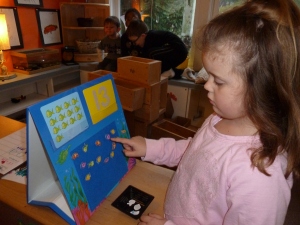The following is a ten-frame magic garden story created by one of our five-year-olds. See if you can spot the knowledge he’s sharing.
Once upon a time there was a mushroom. The mushroom planted the seed in the first row. That night, a bird came down and dug it up.
The next morning, the mushroom didn’t know where it went. So, he planted it deeper in the second row. He went home. Again, the bird came and used his wing and dug it up.
The next morning the mushroom came and saw his seed was gone again! He dug down really deep and planted a new seed in the third spot. He was tired so he went home. When the bird came, he saw that the seed was buried very deep. He dug and dug and dug until he got the seed.
In the morning, the mushroom was mad. He planted another seed in the fifth spot. The bird came again and stole that one.
Mushroom was getting very frustrated. Every day he planted a new seed and everyday bird would dig, dig, dig it up. On the last day, mushroom planted the seed in the tenth spot. He hid behind a tree. When the bird came, mushroom jumped out at him and yelled, “AAAAHHHHHhhhhhhhh!” Bird flew away and never bothered the mushroom again. The sun came out, the rain came down, the flower grew into a beautiful dragon. The End.














